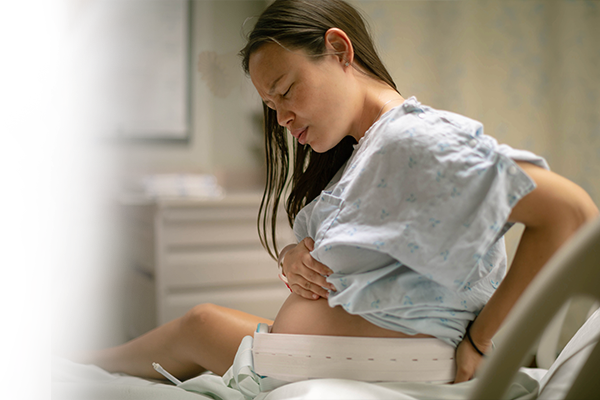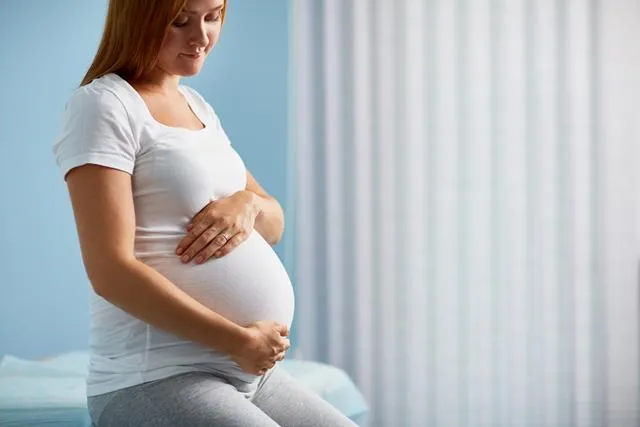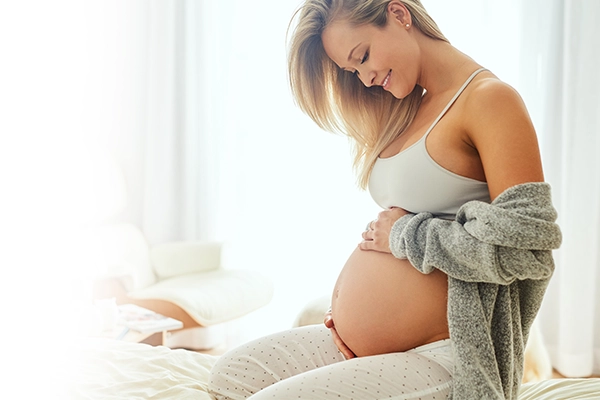Labor pain, unlike other sources of pain, does not indicate pathology, but is part of the physiological process of child birth. There are attempts to compare it to many things, but most postpartum women find that it cannot be compared to anything else. How do you recognize labor pain and how long do contractions last?
Premonitory contractions
A pregnant woman usually begins to feel predictive contractions around the 20th. One week of pregnancy. The literature distinguishes between Alvarez and Braxton-Hicks contractions. They differ in the intensity of the pain experienced. Alvarez contractions are sometimes so small that not all women feel them. Braxton-Hicks contractions, on the other hand, can manifest themselves, among other things, by hardening of the abdomen.
Premonitory contractions can manifest as pain in the lumbosacral region. About 38. week of pregnancy, the contractions that occur are stronger, increasingly similar to labor contractions. However, they pass spontaneously after about 2 hours or taking a diastolic drug.
How do you recognize labor pains?
Uterine labor contractions differ from predictive ones in frequency of occurrence and intensity of pain. They are much stronger and more frequent. They do not pass after a period of time or after taking decongestants. As labor progresses, they are gaining strength. One contraction usually lasts 70 seconds. During the first period of labor, up to the point of 10-centimeter dilation, contractions occur at a frequency of about three per minute.
In addition, labor contractions cannot be stopped. The exception is tocolysis, used in hospitals when labor begins between 24. a 34. week of pregnancy to allow the use of steroid therapy aimed at the development of the newborn’s lungs.
Every how many minutes do labor contractions occur?
As dilation progresses, labor contractions become more frequent and intense. At first, there are contractions every few minutes that last about 30 seconds. Then their frequency increases, they occur every 2-5 minutes or so and last longer and longer, usually a minute. Each contraction consists of three parts: rise, peak and fade. When dilation reaches 8 centimeters, contractions become longer and occur every 2 minutes or so. When the first period of labor ends, parturition contractions begin, leading directly to the birth of the baby. They are the most painful and exhausting for the parturient. In between there are short breaks to rest and gain strength for the next push. The second phase of labor lasts a maximum of 2 hours. Its length depends on whether the woman has previously given birth by natural means or whether this is her first birth (i.e. she is a firstborn).
How long do labor contractions last?
Depending on whether a woman has previously given birth by natural means or this is her first birth (she is a firstborn), subsequent periods of labor may be of different duration. The aforementioned I. period in women who give birth for the first time can last up to a dozen hours. In a multiparous woman, it can take as little as 30 minutes from full dilation to delivery of the baby. III. The period of labor, which is defined as the expulsion of the placenta, should last a maximum of half an hour, according to the scientific literature. The woman then feels softer contractions, usually with less frequency and intensity of pain.
When to go to the hospital?
Uterine contractions more frequent than every 10 minutes sustained for at least half an hour are considered the onset of labor. These contractions lead to shortening and dilation of the cervix. Doctors recommend that any pregnant woman, if she develops a headache, an increase in blood pressure, bleeding from the genital tract or green amniotic fluid draining, should not delay and go to the hospital immediately. Immediately go to the emergency room when a pregnant woman begins to feel the baby’s movements less clearly.
Relieving labor pains
There are pharmacological and non-pharmacological methods of relieving labor pain. The first group includes central blocks-usually epidural anesthesia is performed, peripheral blocks, e.g., vulvar nerve block (rarely used), inhalation analgesia, the so-called “inhalation analgesia. laughing gas (i.e., nitrous oxide) and in exceptional cases-opioids. According to the current “Organizational Standard for Perinatal Care,” every woman giving birth should also have access to non-pharmacological methods of pain relief. These include. Water immersion, TENS, hypnosis, acupuncture, relaxation techniques or the use of special balls and sako bags during labor. Not all methods are available in every hospital, but a woman should always have the right to choose which pain relief she wants to use during labor.
There are absolutely no contraindications to cord blood collection in a mother who has opted for a pharmacological form of anesthesia. Therefore, if you plan to secure your child’s stem cells to treat him in the future, should the need arise and you want to use any form of anesthesia, you can easily do so.
Bibliography:
Obstetrics and gynecology TOM 1, G. Bręborowicz
Rate this article:











